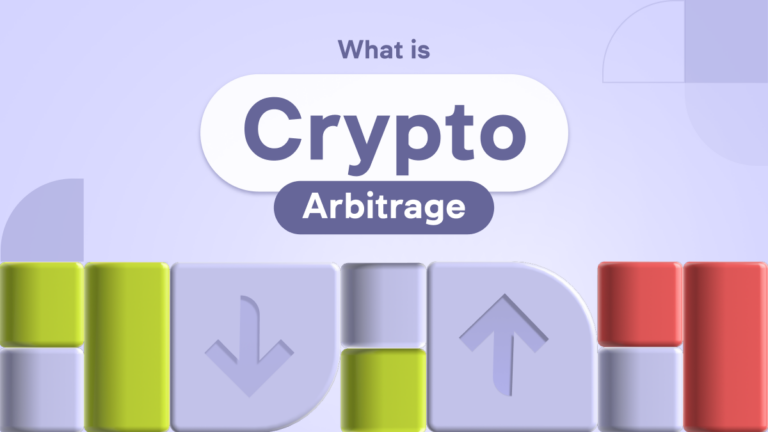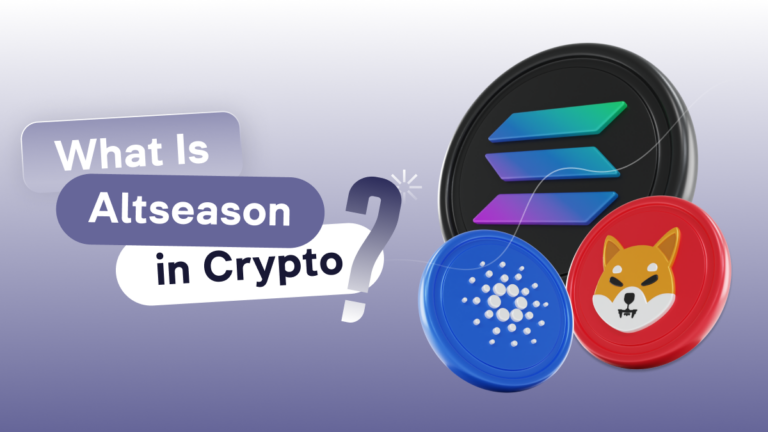What is Proof of Stake (PoS)?

Content
- Who Invented Proof-of-Stake and for What Purpose?
- How Does PoS Work?
- How Has Coin Delegation Affected POS Performance?
- Proof-of-Stake and Staking
- Types of Proof of Stake
- Proof-of-Stake Security
- Examples of cryptocurrencies using Proof-of-Stake
- Advantages and disadvantages of Proof-of-Stake
- The Future of PoS
- Conclusions
Transaction speed is crucial in cryptocurrencies, and the Proof-of-Stake algorithm offers a solution that addresses many of the shortcomings of other consensus mechanisms. PoS improves the scalability and security of blockchain networks, ensuring their sustainability. Let’s examine PoS, what does it stand for, its working principles, and its differences from other algorithms.
Proof of Stake is a consensus mechanism to confirm transactions and create new blocks. Unlike Proof of Work (PoW), where miners solve complex problems through mining proof of stake, in PoS validators are allowed to create blocks based on the number of coins they hold (“stakes”). The more coins, the higher the probability of being selected to create the next block. This reduces power consumption and increases scalability, making PoS a greener and more cost-effective.
Who Invented Proof-of-Stake and for What Purpose?
Proof-of-Stake (PoS) was first proposed in 2011 by a developer under the pseudonym Quantum Mechanic on the Bitcointalk forum. However, the first project to put PoS into practice was the cryptocurrency Peercoin, launched in 2012 by its creators Sunny King and Scott Nadal. The main purpose of creating the Proof-of-Stake consensus algorithm was to address the high energy intensity and limited scalability of the Proof-of-Work (PoW) mechanism that was used in Bitcoin and other early cryptocurrencies.
The purpose of creating Proof-of-Stake was to address the key problems of Proof-of-Work, such as high energy intensity and limited scalability. The Proof-of-Stake protocols were designed to reduce energy consumption by not requiring complex computational tasks, improve security by reducing the risk of “51%” attacks, and increase decentralization by making participation in validation available to more users. In addition, blockchain Proof of Stake improves network scalability by speeding up transaction processing and enabling blockchains to function more efficiently.
How Does PoS Work?
Instead of using computing power to validate transactions and create new blocks, PoS cryptocurrency is based on the stake of coins a validator owns. The more coins a participant owns, the higher their chances of being selected to validate a block, making this mechanism more energy-efficient and cost-effective. Let’s get to the details about the workings of crypto proof of stake.
Randomized Block Selection
Proof of Stake in Blockchain, a key element is the randomized selection of validators to create new blocks, which helps avoid the concentration of power in the network. Blockchain technology allows the implementation of different algorithms that consider time factors or random parameters to ensure a fair distribution of power among participants, supporting decentralization and network security.
Choosing the Age of Coins
A key aspect of some Proof of Stake implementations is the selection of validators based on coin age, also called “coin age.” Validators with “older” coins have a greater chance of being selected to create a blockchain, which incentivizes long-term asset ownership. This method reduces the likelihood that the same participants will continually create blocks, ensuring that the odds are more evenly distributed among all coin holders.
Transaction Validation
Validators in the cryptocurrency proof of stake system verify transactions before adding them to the blockchain. They authenticate the data, confirm compliance with network rules, and prevent double-spending. Once the validation is complete and the blockchain is confirmed, the validator is rewarded for their work. This process makes (PoS) Proof of Stake more energy efficient than Proof of Work and contributes to faster transaction processing speeds. proof of stake algorithm mining is different in that it doesn’t require complex tasks to validate transactions like Proof of Work, instead validators participate in the process based on the number of coins they have staked.
How Has Coin Delegation Affected POS Performance?
Coin delegation in the Proof of Stake mechanism has greatly improved network performance by allowing participants unwilling or unable to become validators to transfer their coins to other users to participate in block validation. This encourages greater participant engagement and increases the network’s decentralization, as more people can participate in the consensus process without purchasing complex hardware or large amounts of coins. Delegation also improves network security and increases transaction processing speed, so that proof of stake networks can scale and maintain stable performance as the number of users grows.
Proof-of-Stake and Staking
Proof-of-Stake and steaking are closely related because steaking is an important component of the PoS mechanism. In a PoS system, participants can “freeze” their coins for a certain period to participate in the process of validating transactions and creating new blocks. This process is called staking. The more coins staked, the higher the chances of becoming a validator and receiving rewards for validating transactions. Staking not only increases user engagement in supporting the network, but also makes it more stable and secure, as participants are interested in maintaining the system’s integrity for the sake of staking revenue.
Types of Proof of Stake
There are several types of PoS, each customized for different blockchain networks and their needs.
What is Delegated Proof of Stake (DPoS)?
Delegated Proof of Stake (DPoS) is a mechanism in which network users vote for delegates to act as transaction validators. The more coins a participant has, the more “weight” their vote has. Delegates elected by majority vote are given the right to validate transactions and create new blocks, which makes the process more democratic and allows for high network speeds, but reduces decentralization as the number of validators is limited.
Leased Proof of Stake (LPoS)
Leased Proof of Stake (LPoS) is an improved version of PoS that allows coin owners to lease coins to increase the chances of a participant being selected during the validation process. Unlike conventional staking, the coins remain under the owners’ control and are not directly transferred. This approach, used in the Waves network, promotes increased decentralization and active community engagement.
Proof of Stake Authority (PoSA)
In the Proof of Stake Authority (PoSA) mechanism, participants must staked tokens to be able to validate, with validators being chosen based on their reputation. This provides high transaction speed and security, but reduces decentralization.
What is Nominated Proof of Stake (NPoS)?
Nominated Proof of Stake (NPoS) is a mechanism developed for the Polkadot network that relies on the interaction between validators and their supporting participants. Supporters choose validators they trust and are responsible for their actions: if they violate the network’s rules, they can lose their assets. This increases the level of responsibility of both parties and makes the process of selecting validators safer.
Pure Proof of Stake (PPoS)
Pure Proof of Stake (PPoS) is a mechanism used in the Algorand network where participants for validation are randomly selected based on staking. The process is completely decentralized and the chances of being selected are proportional to the number of coins in the staking, ensuring transparency and fairness for all participants.
Effective Proof of Stake (EPoS)
Effective Proof of Stake (EPoS) is an improved version of PoS that considers not only the size of the staking, but also the efficiency of the participants. EPoS reduces the chances of dominance by large validators and increases the opportunities for smaller participants, providing a more even distribution of roles in the network. This mechanism helps to prevent the monopoly of large players and support decentralization.
Hybrid Algorithm (PoA)
Proof of Authority (PoA) is a proof of stake consensus algorithm that focuses on the identity of validators rather than their stakes. In PoA, validators are elected based on their reputation and trust, making the network fast and secure. However, this mechanism is less decentralized because trust mainly focuses on a few validators with high authority levels.
Proof-of-Stake Security
Proof-of-Stake (PoS) security is provided by several key mechanisms that make it an effective alternative to traditional methods such as Proof-of-Work (PoW). Here are the key aspects of PoS security:
- Economic incentives and penalties: Validators send their coins to a cryptocurrency staking, and if they violate the rules, their funds can be confiscated (“slashing”). This incentivizes honest behavior.
- The attack is 51% complex: It requires ownership of more than half of the network’s coins, making it economically disadvantageous as the attacker risks their assets.
- Delegation and distribution of shares: Delegation allows more participants to influence the choice of validators, reducing the risk of centralization.
- Transparency: All transactions and validator elections are public, allowing for quick detection of unscrupulous behavior.
- Locked funds: Validators’ funds can be locked for a specified period of time, preventing short-term fraud and increasing their accountability.
Examples of cryptocurrencies using Proof-of-Stake
Various types of cryptocurrencies use Proof of Stake crypto to increase scalability and reduce power consumption. Let’s examine the most popular PoS cryptocurrencies.
Ethereum
Ethereum (ETH) moved to Proof-of-Stake during the Ethereum 2.0 update, which ended in 2022. This transition was aimed at improving network scalability and reducing energy costs. Validators in Ether are now authorized to validate transactions and create blocks based on the amount of ETH they have staked. This mechanism makes the network more energy efficient and secure, as validators are vested in operating fairly to preserve their funds. Ethereum history includes the transition from Proof of Work to Proof of Stake, whereby validators are now empowered to validate transactions and create blocks based on the amount of ETH put on staking, making the network more energy-efficient and secure.
Solana
Solana (SOL) is a high-performance blockchain network that utilizes a hybrid Proof of Stake and Proof of History (PoH) consensus model. Validators in Solana are selected based on the number of SOLs they have staked and validate transactions at incredible speed. What makes Solana special is its ability to process thousands of transactions per second while maintaining decentralization by distributing responsibilities among multiple validators.
Toncoin
Toncoin (TON) is a cryptocurrency on The Open Network (TON) blockchain that also utilizes the Proof of Stake consensus mechanism. Validators in the TON network validate transactions and create blocks, earning rewards based on TON staking. Telegram originally developed this blockchain to create a fast and decentralized network focused on scalability and usability. The TON network utilizes a multi-tier architecture that provides high throughput and low fees.
Advantages and disadvantages of Proof-of-Stake
| Proof of Stake Pros | Proof of Stake Cons |
| Lower power consumption compared to Proof-of-Work | The threat of centralization due to the concentration of coins in large holders |
| Increased scalability and speed of transactions | Need to block funds on staking |
| Lower barrier to participation in validation | 51% attack risk if an attacker controls a large portion of the coins |
| Incentives for long-term asset ownership | Less verified security history compared to Proof-of-Work |
The Future of PoS
The future of Proof of Stake cryptocurrency looks promising as more and more blockchain projects adopt this energy-efficient and scalable consensus mechanism. With the growing popularity of cryptocurrencies and the increasing number of users, PoS continues to evolve, offering new Proof of Stake model such as Delegated and Nominated PoS that enhance security and decentralization. In addition, PoS adoption is helping to reduce the environmental impact of blockchains, which is especially important in the global fight against climate change. As technology improves, Proof of Stake PoS could become the dominant standard for most blockchain networks.
Conclusions
PoS is a new era in cryptocurrency networks. It offers an efficient, secure and environmentally friendly way to reach consensus. This mechanism ensures sustainable development of the blockchain industry and drives innovation that will shape the future of financial systems.











